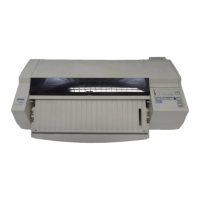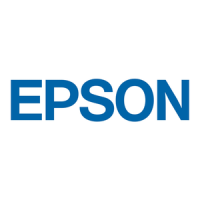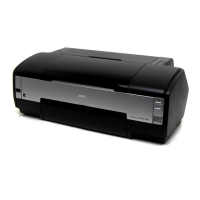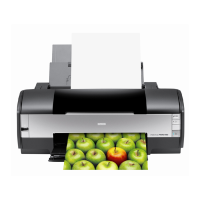INTERFACES
Hardware Interfaces
This section describes Stylus 1500 interfaces. The printer is standard-equipped with a parallel
interface.
Parallel Interface
Forward Channel
Transmission mode: 8 bit parallel, IEEE-P1284 compatibility mode
Synchronization:
STROBE pulse
Handshaking: BUSY and
ACKNLG signal
Signal level: TTL-compatible level (IEEE-P1284 Level 1 device)
Adaptable connector: 57-30360 (Amphenol or equivalent)
The BUSY signal is set HIGH before either
ERROR is set LOW or PE is set HIGH, and BUSY is held
HIGH until all these signals return to the inactive state. The BUSY signal goes HIGH in the
following cases:
❏ During data entry (See Figure 1-4 below.)
❏ When the input data buffer is full.
❏ When the
INIT signal is LOW or during hardware initialization.
❏ During a printer error (See the
ERROR signal description below.)
❏ During self-test printing.
❏ In the default setting mode.
❏ When the parallel interface is not selected.
The
ERROR signal is LOW when the printer is in one of the following conditions:
❏ Printer hardware error (fatal error).
❏ Paper-out error.
❏ Release lever operation error.
The PE signal is HIGH during a paper-out error.
DATA (n)
DATA
STROBE
BUSY
ACKNLG
500 ns (min.)
500 ns (min.) 500 ns (min.)
0 (min.)
0 (min.)
500 ns ~10 µs
0 (min.) 500 ns (max.)
DATA (n+1)
* : The rise and fall time of every output signal must be less than 120 ns.
The rise and fall time of every input signal must be less than 200 ns.
Figure 1-4. Data Transmission Timing
Printer Features
1-10 EPSON Stylus 1500 Service Manual

